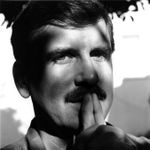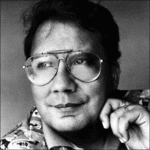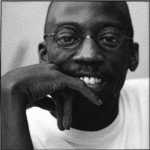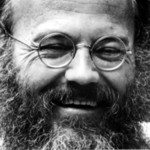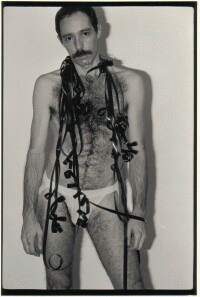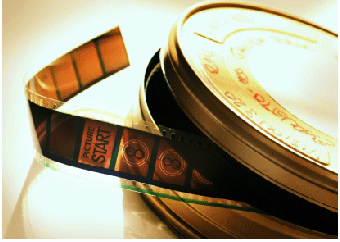SEEING THE LIGHT
James Broughton on Cinema
White Crane Books is very proud to announce the spring 2007 release of All: A James Broughton Reader, as part of the White Crane Wisdom Series. Edited by poet and Berkeley radio host, Jack Foley, it is a new collection of James Broughton’s poetry, film scripts, and commentary. Broughton, with life partner, Joel Singer, created some of the most avant-garde films of the 1950s, 60s and 70s and fathered a child with legendary film critic, Pauline Kael. He was a “Walt Whitman of film” and received the American Film Institute Lifetime Achievement award in 1989. No discussion of the spirituality of film and cinema can be complete without his contributions being taken into consideration. Seeing the Light is excerpted from All: A James Broughton Reader portions of which have never before been published.
Seeing the Light, Broughton’s book on filmmaking, appeared from City Lights in 1977. Rewritten, and with a new title, Making Light of It, the book appeared again from City Lights in 1992. The new version began with a glance at Dante’s Vita Nuova: “On a foggy morning in 1946 Sidney Peterson took me to an abandoned cemetery in San Francisco where I discovered a new life.” The selections here are from the 1977 edition. “Follow your own Weird” is Broughton’s transmutation of Joseph Campbell’s phrase, ‘Follow your bliss.” As he did with everything, Broughton constantly mythologizes cinema, seeing it in relationship, not only to himself, but to various worlds and contexts:
When I was 30 my greatest consolation was the thought of suicide. But that was three years before I began to make films. What a lot of vicissitude, ecstasy and ennui I would have missed!
Did the creation of moving black and white images save my life? It is certain that I have never seriously contemplated suicide since. “It takes a long time to become young,” said Picasso.

I am not talking here about going to the movies; I am talking about making cinema. I am talking about the life of vision. I am talking about cinema as one way of living the life of a poet. I am talking about film as poetry, as philosophy, as metaphysics, as all else it has not yet dared to become.

Going to the movies, to indulge your fantasies or to have critical opinions, is certainly one way to pass your time. But it has little to do with the art of bringing the movie to life or bringing life to the movie. Be wary: life is what happens while you are doing something else.

Analytical theorizing is often felt to be “over one’s head.” It is nothing of the sort. It is actually under one’s feet. It is the mud one has to wade through: the bog of literal minds who build labyrinthine swamps of intellect to preserve themselves from direct experience. What is truly over one’s head is the realm of the poetic imagination. As Barnett Newman put it: “Aesthetics is for the artist as ornithology is for the birds.”

Cinema like life is only worth living when it is in the service of something beyond the explicit and the mundane.
When Marianne Moore was asked whether she wrote poetry for fame or for money, she replied, “Are there no other alternatives?”

Every new film begins from scratch, from a roll of blank film, as if one knew nothing at all. Another leap in the dark, another jump off a cliff!

Look at cinema as a mystery religion.
Going to the movies is a group ceremony. One enters the darkened place and joins the silent congregation. Like mass, performances begin at set times. You may come and go but you must be quiet, showing proper respect and awe, as in the Meeting House or at Pueblo dances. Up there at the altar space a rite is to be performed, which we are expected to participate in.

The Secret Name of Cinema is Transformation
Transform transform
anything everything—
stairways into plants
buttercups into navels
icebergs into elephants—
everything
everywhere
the old scene renewed by seeing
the unseen seen anew
transformed

Are you ready and willing to take the Three Vows — the vows of Poverty, Chastity, and Obedience?
Poverty: because you will be forever in debt to the camera store and the laboratory, and will be forever begging from friends and foundations.
Chastity: because you will be wedded to your work and your wildest escapes will be with it.
Obedience: because your life will be in the service of an endlessly demanding tyrant with more heads that a hydra and more legs than a centipede.

The Pledge
I swear to abstain from all ready-made ideas and from all critical assumptions.
I swear to refrain from falling in love with my own footage.
I swear to be precise, ruthless and articulate.
I swear to delight the eye and ear of all creatures.
I swear to attempt the impossible, to exceed myself (no one else), and to venture where no one has ever pushed a button before.
I swear that my aim will always be: to put the right image in the right place at the right time and at the right length.

Don’t waste your time making a film like anyone else’s. That’s duplication of effort. Besides, it won’t be any good. Your business is to make something that neither you nor I have ever seen before. Your business is to make a wonderful new kind of mess in your own way…Your business is to take the risk of your madness. Hello, Columbus.
Excellent strategy: do what you are most afraid of doing. Look what [Stan] Brakhage did. He has always feared death intensely; it has been a constant threatening imminence for him. So, with the courage that has always made him a trail-blazer, he took his camera tightly in hand and went into the city morgue of Pittsburgh and looked closely and filmed unforgettably the forms of death as they had never been seen before: The Act of Seeing With One’s Own Eyes.

If you become familiar with your dreams, you will enter the translucent realm of the archetypes, those potent primal images of mankind. They are much more exciting and abiding than topical events.

“Follow your own Weird.” But this doesn’t mean that all you have to do is turn on the camera and express yourself. Just as talking has nothing to do with creating, self-expression has nothing to do with art. “Anything goes” may be therapy but that is only prelude to the shaping of visions thus discovered.

Perhaps the ultimate avant-garde position: to reach the place where you no longer lean on any object, any reference. Or, as with Krishnamuri, ‘the stairway without any railing.’ Then you might reach the sphere of the innate light, the Mother Light, the light of which all other lights are the children.
Can you go past your dreams to the pure light of dreaming?

For the Brothers of Light Cinema is:
a high form of yoga discipline
a service of prayer and thanksgiving
a translucent mystery
a devotional agony
a quest for ecstasy
a new creation of the world
a society of explorers
a fellowship of the inner radiance

In recent years some particularly movie characters have moved into Oz. One of them is a dowager from the early days, Queen Trixie of Flix, who dwells in the Hall of the Great Silents. She has gotten fat from long sitting, her eyesight is defective, and she no longer knows one movie from another. But her magic movieola is always going and she loves everything she sees.
One of the muses of cinema sometimes visits Queen Trixie of Flix: a shadowy alluring creature, who has a habit of fading out when you need her most, her name is Oblivia. She makes filmmakers obvious of everything but film and then leads them and their works into oblivion.
Some of the other muses of cinema are: Lumena, Opia, Ephemera, Insomnia, Nostalgia, and Synchronicita.
Above all of these is, of course, the great goddess CineMa, whom the residents of Cineoz worship religiously. She is a goddess of Time continually weaving for us and through us the fabric of her illusions of the world. All the movies that we imagine we experience in time are generated for us by her dancing web. Endlessly proliferating, she is our mother, our magic and our despair.

Some Mottos for Editing Room Walls (1992 version)
Compose yourself. Then compose.
Every frame is a moment of Now.
Take nothing for granted.
By all means try all means.
When in doubt, cut.
Attain the inevitable.
Allness is ripe.

Cinema is its own Book of Changes. It has, in the end, little to do with works of art as such. It is not an infinite number of separate “things.” It is a “sensitive chaos” in duration like the Tao. How can you look at something as a public monument when, while you are looking at it, it is already floating down the river into Elsewhere?…the picture you just took of what is happening is not what is happening now.

The Tao of cinema affirms unbroken movement: it never stops, it never turns back, its patterns are real only as they pass. And every observer is himself part of this web-like river. This is the never-ceasing cinema of our light and dark, great and small, dim and bright Yang and Yin.

If you accept the principal of Eternal Change as governing the universe, then to work in a perishable medium like film means that you accept the universe…Either you trust a river, or you don’t. Tao means knowing that you don’t know, and being happy about it.

There is no black and white dualism in Taoist cinema. Its dark is always into its light and its light is always into its dark, for these are not absolutes. They continually flow into one another, overlap, become their opposites. This is symbolized on the revolving reel of the Tai Chi at the beginning and ending of Nuptiae. That symbol is the eternal movie of the Relative Absolute (or Absolute Relative), which might best be expressed by a transcendental double exposure.
Is there a true Taoist film that uses double exposure metaphysically to reveal the play of opposites in every moment of our being? Please try this, someone.

Buddhistically speaking, cinema is just a way of filling the Void.

From the Potted Psalm in 1946 to Erogeny in 1976 I could not have created anything without sharing love with my collaborators. This is a weakness I take delight in. “Relations are real, not substances,” said the Buddha. And the more intense the love, the livelier the work. Eros is a true source of the Light.

All of my own films have been acts of love. They have been made with love and for love, with the love of others and for those whom I loved. And for the most part the theme of all my work is Love: a call for, a quest for, a fete for.
I meant what I said in Testament: I do believe in ecstasy for everyone. There is nothing I would more gladly give to the world, if I could. The ecstatic has been my faith and my adventure.




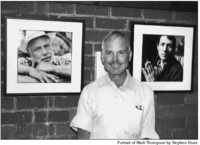
 Bo Young:
Bo Young: